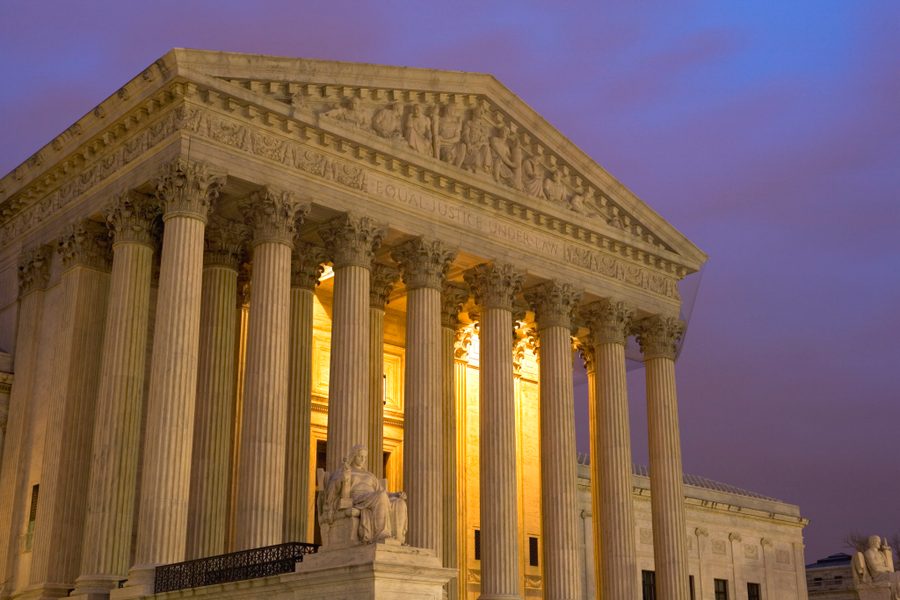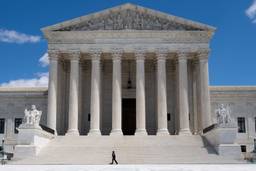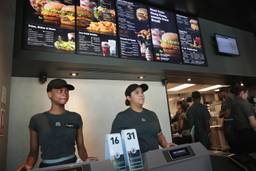The Supreme Court Has Long Been Anti-Worker. This Is Biden’s Chance to Change That.
To fulfill his promise of being a “pro-union president,” Biden should choose a justice who has shown a commitment to defending workers’ rights.
Moshe Z. Marvit

Last week, U.S. Supreme Court Justice Stephen Breyer announced that after almost three decades on the bench, he will retire at the end of this term. Though President Biden’s pick for his replacement will not change the ideological makeup of the court — Breyer is one of only three liberal justices in the minority — whoever is chosen will have an outsized voice in ruling on this country’s laws for decades. Even when not in the ideological majority, a justice can ask difficult and important questions in oral arguments, find ways to narrow bad decisions from the court, write dissents that poke holes in the majority’s reasoning, and lay the groundwork for a future majority.
It’s past time that a new Supreme Court justice should come from the labor movement, and whichever candidate Biden nominates should have a strong background representing workers’ rights. Yet some voices in the Democratic Party are pushing the president to appoint Judge J. Michelle Childs, who previously worked as a management-side lawyer. In response, some labor leaders are voicing concern, such as Sara Nelson, president of the Association of Flight Attendants, who told the Washington Post that Biden should choose among “several other candidates who have been in the trenches with workers and have a proven record of upholding worker rights.”
The Supreme Court has rarely been a friend to workers. Most justices have come from elite law schools that train lawyers to work for large corporate firms, and insofar as any of them have had experience in labor or employment law, it is usually on the side of management. The current Supreme Court is the embodiment of hostility towards organized labor. In 2018, an empirical analysis found that that year’s Supreme Court (even before the seating of Trump picks Brett Kavanaugh and Amy Coney Barrett) was the most pro-business court since the “Lochner Era” at the turn of the 20th century, when the court regularly struck down laws that provided a minimum wage, prohibited child labor or protected workers’ safety. In an analysis of the 2019-2020 term, the Constitutional Accountability Center found that the court was extremely skewed towards business interests, siding with the U.S. Chamber of Commerce a full 70% of the time.
Several recent examples show what’s at stake in many of these cases. In 2014, a unanimous court held that Amazon warehouses that require workers to endure nearly 30-minute security checks at the end of their shifts were not required to pay workers for their time. This decision opened the door for companies to legally steal their employees’ time without paying them. In 2018, the court overturned four decades of precedent and ruled that public-sector union fair-share fees, where non-member workers who are represented by the union must pay the cost of that representation, were unconstitutional. In doing so, it transformed the entire public sector into so-called “right-to-work.” During that same term, the court held that, despite the National Labor Relations Act’s clear language protecting workers’ rights to engage in concerted activity, workers could be forced to sign away their right to participate in class-action workplace disputes. More recently, in 2021, the court ruled that a property owner’s right to exclude people from his property trumped the labor rights of agricultural workers: The court overturned a 1975 California law that allowed union organizers to meet agricultural workers at the worksite during certain non-work hours because such workers are so difficult to reach off the job.
This anti-worker bent has continued into the current term. Just last month, the court blocked OSHA’s mandate that workers at large workplaces get vaccinated for Covid-19 or get regularly tested. The OSHA rule was intended to protect Americans from contracting Covid at work. However, in truly bizarre reasoning that shows how little the Supreme Court majority understands work or the workplace, the majority wrote, “Although COVID – 19 is a risk that occurs in many workplaces, it is not an occupational hazard in most. COVID – 19 can and does spread at home, in schools, during sporting events, and everywhere else that people gather.” Pointing out the absurdity of this reasoning — that just because one can catch Covid outside of work it is then not an occupational hazard — labor journalist Dave Jamieson tweeted, “SCOTUS: I can fall off a ladder at my home. Therefore, falling off a ladder cannot be considered an occupational danger.”
These recent cases are in line with decades of court rulings that have rewritten labor law to strip workers of rights and protections. In fact, at this point, most of labor law has been written by the courts. Though Democrats often talk of labor law reform, Congress has rarely had large enough pro-worker majorities to enact such reforms. Instead, the Supreme Court (and lower federal courts) have spent the last 85 years narrowing its protections and using it to constrain workers.
In one of the earliest cases regarding the NLRA, the Supreme Court in 1938 gutted the law’s provision protecting the right to strike by allowing employers to hire permanent replacement workers. In 1952, the court opened the door for employers to engage in bad-faith bargaining by insisting that the National Labor Relations Board should not find a violation of the duty to bargain even when it appears so. In 1956, the court overturned an NLRB decision that required employers to grant limited access to their property to union organizers. These cases represent early examples of the Supreme Court consistently narrowing workplace rights and protections such that it is exceptionally hard for workers to actually exercise their labor rights at work.
A large part of the problem is that it has been exceedingly rare for a nominee to the Supreme Court to have any prior experience representing workers prior to their appointment. Many, like Justice Samuel Alito, Justice Clarence Thomas, and Justice Neil Gorsuch, have strong biases against worker protections. But even among the more liberal justices there is too often a lack of understanding of the dynamics and experiences of the workplace.
Incidentally, Breyer’s seat on the Supreme Court was, for a time, labor’s seat. Between the late 1930s through the early-1960s, the seat was held by Justice Felix Frankfurter and then Justice Arthur Goldberg. Prior to becoming a justice, Frankfurter co-wrote the book The Labor Injunction, which systematically showed how courts were stacked against labor and used injunctions to limit labor’s activities. Goldberg, prior to becoming a justice, was the general counsel to the Congress of Industrial Organizations (CIO) and United Steelworkers (USW), and served as U.S. Secretary of Labor.
Workers have gone far too long without a voice on the Supreme Court. Biden has repeatedly pledged that he will be “the most pro-union president leading the most pro-union administration in American history.” There are plenty of worker-friendly potential justices for him to choose from, including Black women. In making this important choice, Biden can pick someone from labor and help fulfill his pro-union promise.
Moshe Z. Marvit is an attorney and fellow with The Century Foundation and the co-author (with Richard Kahlenberg) of the book Why Labor Organizing Should be a Civil Right.








